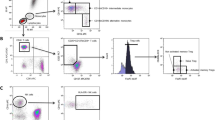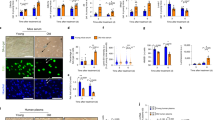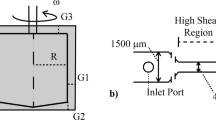Abstract
To remove senescent red blood cells (RBCs) from the circulation, macrophages must distinguish them from mature RBCs. That is achieved by a specific recognition system1,2. An antigen that develops on the surface of a senescing RBC is recognized and bound by the Fab region1 of an IgG autoantibody in the serum2. Subsequently the Fc region of the autoantibody is recognized and bound by a macrophage3, which proceeds to phagocytose the RBC. The antigenic molecule can be extracted from senescent but not young RBCs with Triton X-100 (ref. 4), although 10–30% as much antigen can be extracted from middle-aged as from senescent RBCs4. I have now used IgG autoantibodies eluted from senescent RBCs to isolate and purify the IgG-binding antigen on senescent RBCs, andto detect the antigen on other somatic cells. The antigen is a ≃62,000-Mr protein which is present on stored platelets, lymphocytes and neutrophils, and on cultured human adult liver and embryonic kidney cells, as well as senescent RBCs.
This is a preview of subscription content, access via your institution
Access options
Subscribe to this journal
Receive 51 print issues and online access
$199.00 per year
only $3.90 per issue
Buy this article
- Purchase on Springer Link
- Instant access to full article PDF
Prices may be subject to local taxes which are calculated during checkout
Similar content being viewed by others
References
Kay, M. M. B. J. supramolec. Struct. 9, 555–567 (1979).
Kay, M. M. B. Proc. natn. Acad. Sci. U.S.A. 72, 3521–3525 (1975).
Berken, A. & Benacerraf, B. J. exp. Med. 123, 119–144 (1966).
Lutz, H. U. & Kay, M. M. B. Mech. Ageing Dev.(in the press).
Murphy, J. R. J. Lab. clin. Med. 82, 334–241 (1973).
Kochwa, S. & Rosenfield, R. J. Immun. 92, 682–692 (1964).
Marchesi, V. T. & Andrews, E. P. Science 174, 1247–1248 (1971).
Laemmli, U. K. Nature 227, 680–685 (1970).
Bennett, G. D. & Kay, M. M. B. Exp. Hematol. 9 (in the press).
Eckhardt, C. E., Hayes, C. E. & Goldstein, I. J. Analyt. Biochem. 73, 192–197 (1976).
Lutz, H. von Däniken, A., Semenza, G. & Bachi, T. Biochem. biophys. Acta. 552, 262–279 (1979).
Hollister, P. J., Bennett, G. D., Onari, K., Kay, M. M. B. & Makinodan, T. Gerontologist (in the press).
Silverberg, M., Furthmayr, H. & Marchesi, V. T. Biochemistry 15, 1448–1454 (1976).
Fairbanks, G., Steck, T. L. & Wallach, D. F. H. Biochemistry 10, 2606–2617 (1971).
Dodge, J. T., Mitchell, C. & Hanahan, D. Archs Biochem. Biophys. 100, 119–130 (1963).
Author information
Authors and Affiliations
Rights and permissions
About this article
Cite this article
Kay, M. Isolation of the phagocytosis-inducing IgG-binding antigen on senescent somatic cells. Nature 289, 491–494 (1981). https://doi.org/10.1038/289491a0
Received:
Accepted:
Issue Date:
DOI: https://doi.org/10.1038/289491a0
Comments
By submitting a comment you agree to abide by our Terms and Community Guidelines. If you find something abusive or that does not comply with our terms or guidelines please flag it as inappropriate.



